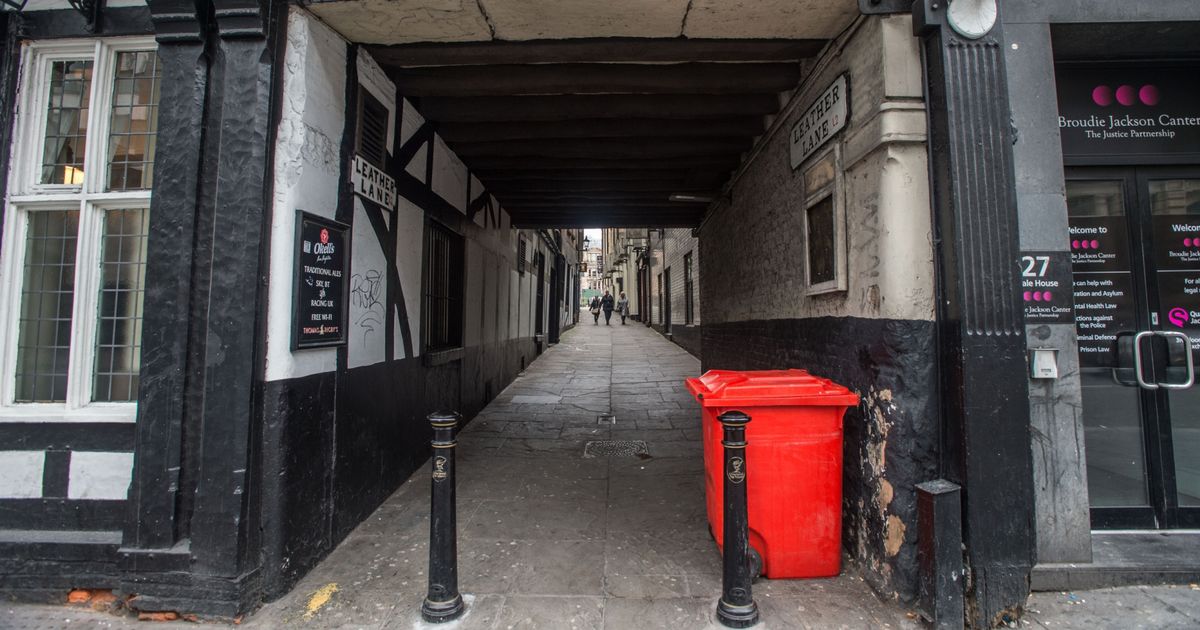Some hidden sights may have escaped your eye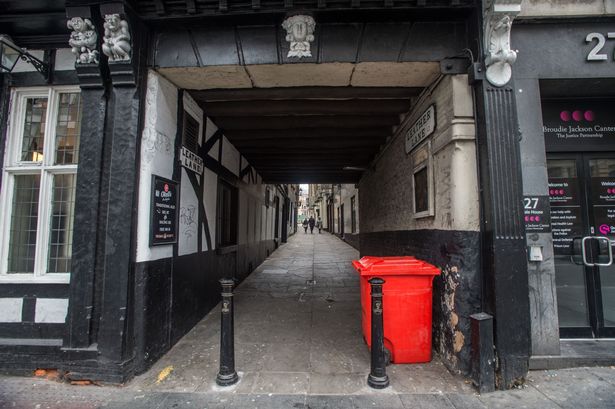 Leather Lane in Liverpool city centre.
Leather Lane in Liverpool city centre.
Liverpool is a city brimming with history and intriguing artefacts – but some you may not have spotted. The city centre boasts many grand buildings, from the Three Graces to Liverpool Town Hall and the Liver Building – these are landmarks that are hard to overlook.
However, as you stroll around the city, there might be some sights you haven’t cast your eyes upwards to notice. Some of these appear unassuming, while others are even concealed. You could have passed by these lesser-known locations without realising.
Back in January 2020, the ECHO compiled a list of 49 things scattered around Liverpool city centre that you might not know even existed. These include the ‘bewitched spring’, the hidden drinking fountain and even a white liver bird.
Many of these city centre sights boast a captivating history. This lengthy list of hidden spots in our city centre serves as a reminder of just how rich in history Liverpool truly is.
Keep your eyes peeled when you’re next in the city centre for these treasures – it could alter your perception of the city.
Town Hall animals
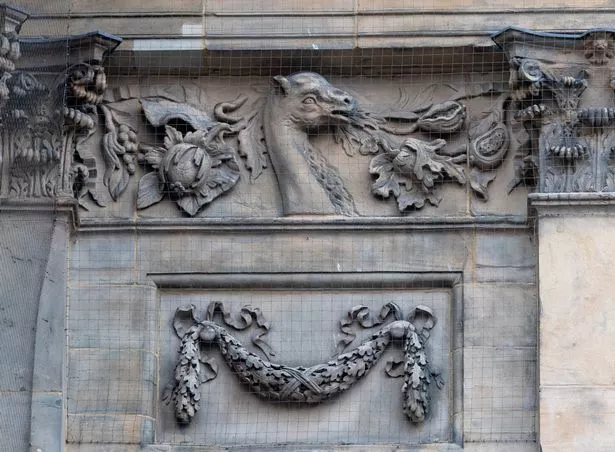 Exotic animals carved into the top of the Town Hall(Image: Gavin Trafford )
Exotic animals carved into the top of the Town Hall(Image: Gavin Trafford )
Exotic animals etched into the sandstone frieze at the top of Liverpool Town Hall. Can you spot the African elephant, bison, crocodile, camel and lion?
White liver bird
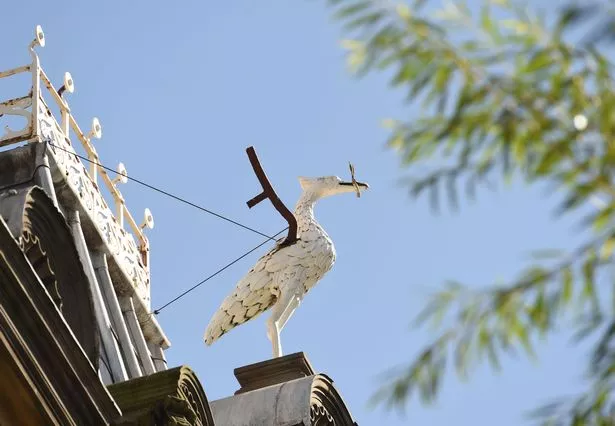 The Liver Bird sat on top of Mersey Chambers(Image: Andy Teebay)
The Liver Bird sat on top of Mersey Chambers(Image: Andy Teebay)
A white liver bird perched above a carved sailing ship on Mersey Chambers in Covent Garden.
Often referred to as the “third liver bird”, it overlooks St Nicholas Church gardens and predates the more famous pair atop the Liver Building opposite.
Brass cross
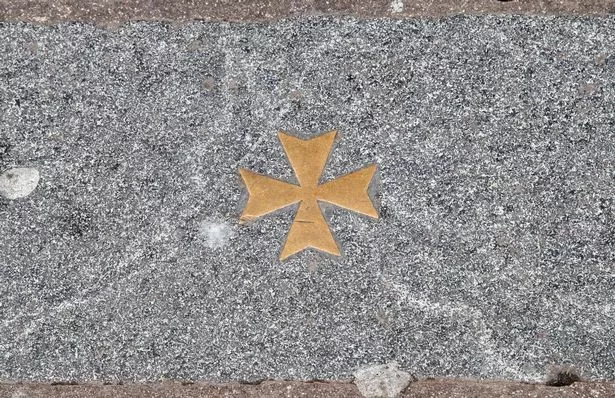 A tiny brass Maltese cross(Image: Gavin Trafford )
A tiny brass Maltese cross(Image: Gavin Trafford )
A tiny brass Maltese cross is embedded in a paving stone outside TopShop on Church Street.
This marks the location of the altar in St Peter’s Church, which served as Liverpool’s pro-cathedral until its demolition in 1922.
Stone tree
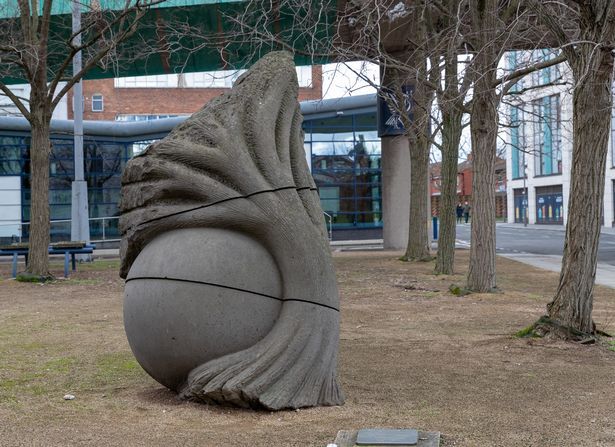 Palanzana the seaweed sculpture on Byrom Street(Image: Gavin Trafford )
Palanzana the seaweed sculpture on Byrom Street(Image: Gavin Trafford )
What appears to be a massive stone piece of seaweed near Liverpool John Moores University on Byrom Street is actually a sculpture.
Created for Liverpool’s Garden Festival in 1984 by sculptor Stephen Cox, Palanzana is a tree-like form surrounding a sphere.
Hidden drinking fountain
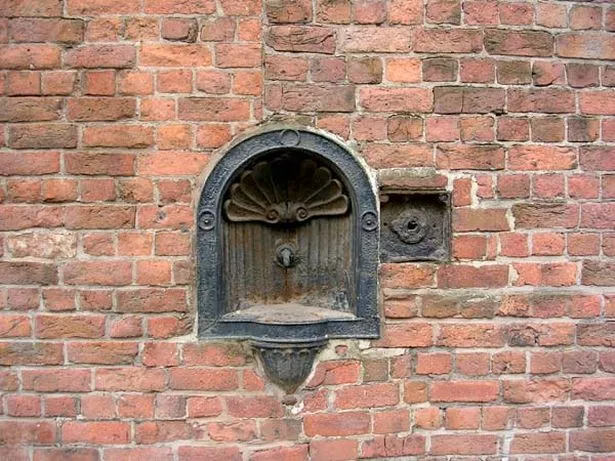 Princes Dock, Melly fountain Bath Street/Gibraltar Row, on the outside of the Dock Wall(Image: Reach PLC)
Princes Dock, Melly fountain Bath Street/Gibraltar Row, on the outside of the Dock Wall(Image: Reach PLC)
Tucked into the red brick wall of Princes Dock is one of many red Aberdeen granite fountains that Victorian cotton merchant Charles Pierre Melly created to provide drinking water to the people of Liverpool.
‘Bewitched spring’
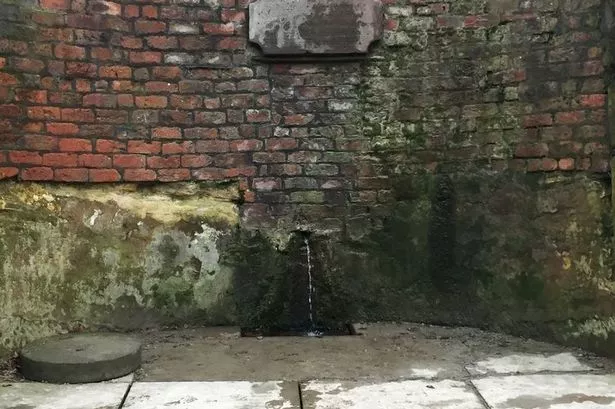 The Chalybeate (contains iron) spring in St James’ cemetery.
The Chalybeate (contains iron) spring in St James’ cemetery.
The city’s only natural spring can be found in St James Garden beneath Liverpool Cathedral.
Discovered by quarry men in 1773, it is believed to have healing properties. However, some believe it is haunted water and turns black when boiled.
Leather Lane
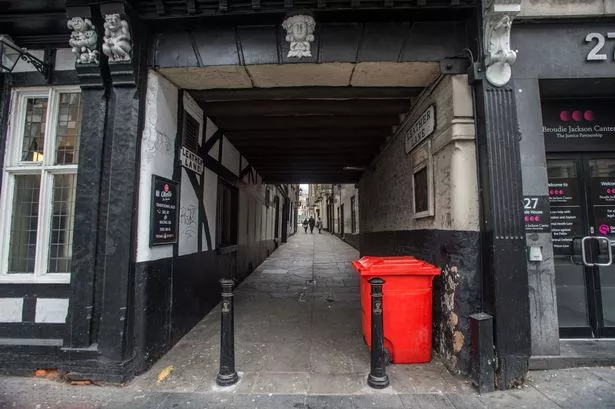 Secret Streets of Liverpool – Leather Lane in Liverpool city centre.
Secret Streets of Liverpool – Leather Lane in Liverpool city centre.
Photo by James Maloney
Leather Lane, a narrow street at the side of Rigby’s pub on Dale Street, offers a trip into the city’s history.
It gets its name from Leather Hall, the leather market that stood here until 1833. Famous horse painter George Stubbs, whose father was a tanner, grew up just a few streets away from here.
Jurassic fossils
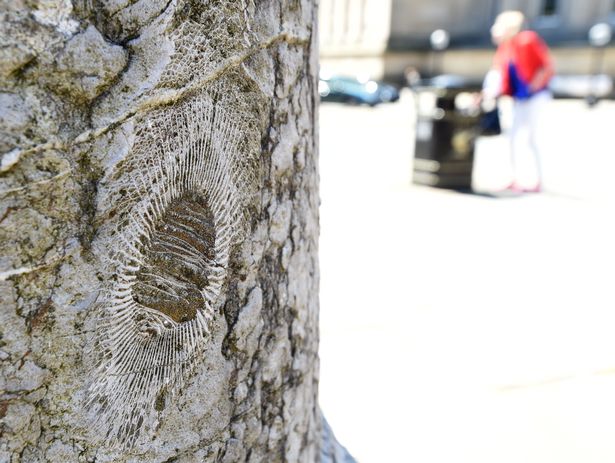 Prehistoric Liverpool fossils on William Brown street near St Georges Hall
Prehistoric Liverpool fossils on William Brown street near St Georges Hall
The streets around St George’s Hall bear traces of prehistoric times – you just need to know where to look.
On the statue of William Rathbone in St John’s Gardens, you can spot 150m year old clam markings. There’s also a groove in the pavement at the top of William Brown Street, left by a fossilised fallen tree.
The Bavarian granite used to construct the MetQuarter houses large fossilised molluscs from the Jurassic era.
Bodybuilding celebration
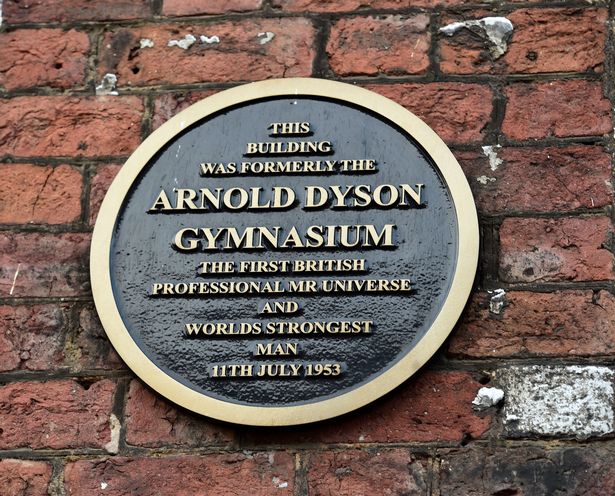 Arnold Dyson Gymnasium on Oxford Street.(Pic Andrew Teebay).
Arnold Dyson Gymnasium on Oxford Street.(Pic Andrew Teebay).
A plaque commemorating the Arnold Dyson Gymnasium is mounted on the wall at 26 Oxford Street – he was the first British professional Mr Universe, clinching the title in 1953.
Another Liverpool
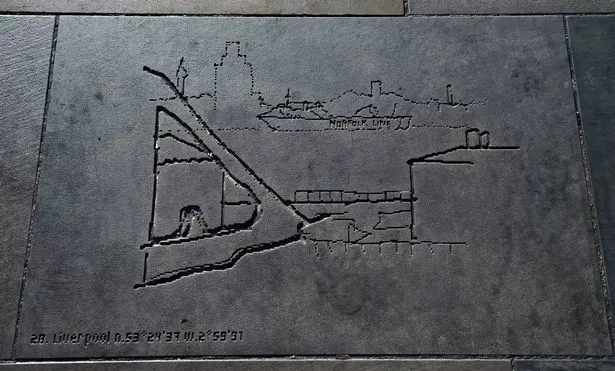 Sketches on the steps in front of Lime Street Station. Photo by Colin Lane
Sketches on the steps in front of Lime Street Station. Photo by Colin Lane
As you ascend the steps in front of Lime Street Station, look down to see drawings etched into the york stone paving. These were created by artist Simon Faithfull, and depict sketches he made while journeying from our Liverpool to Liverpool in Nova Scotia, Canada, via container ship, train and bus.
Night and Day
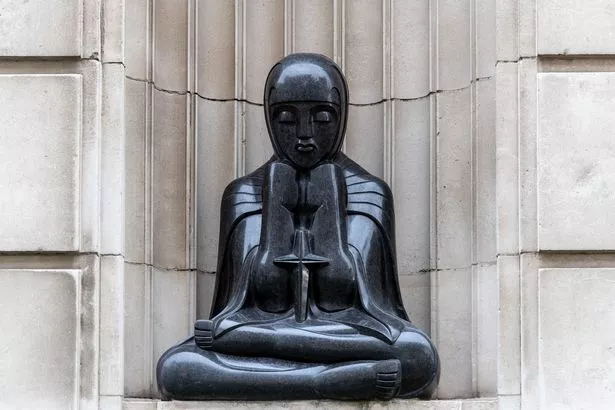 Night sculpture on the back of the Mersey Tunnel shaft on The Strand.(Image: Gavin Trafford)
Night sculpture on the back of the Mersey Tunnel shaft on The Strand.(Image: Gavin Trafford)
Venture behind the George’s Dock Building Mersey Tunnel shaft to uncover two Art Deco black basalt sculptures. Crafted by Edmund C Thompson for the building’s completion in 1934, they were replaced in 1994 after being in storage for several years following their theft.
Kissing Gate
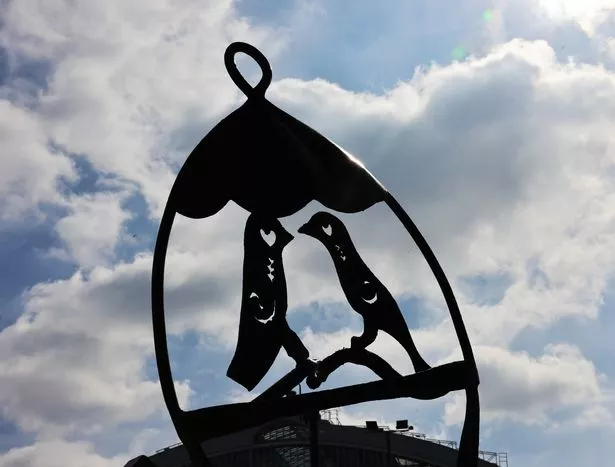 The Kissing Gate at Lime Street(Image: Photo by Colin Lane)
The Kissing Gate at Lime Street(Image: Photo by Colin Lane)
Another sculpture crafted for the Garden Festival, this forged steel gate features sheep’s faces and a pair of canaries. Its creator, Alain Ayers, drew inspiration from the sweet song sung by male canaries to woo a mate.
Tiger heads
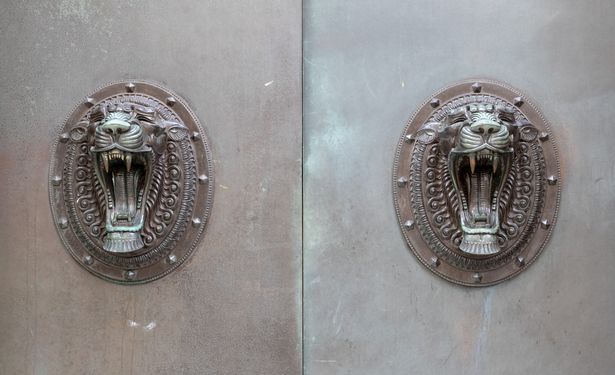 Tigers heads on old bank in Water Street(Image: Gavin Trafford)
Tigers heads on old bank in Water Street(Image: Gavin Trafford)
A pair of fierce tiger heads cast in bronze embellish the doors of the former Bank of Liverpool on Water Street.
It is said that Lascar Indian seamen used to rub their heads for good luck. Do you dare put your hand inside their mouths?
Street named after a pirate ship
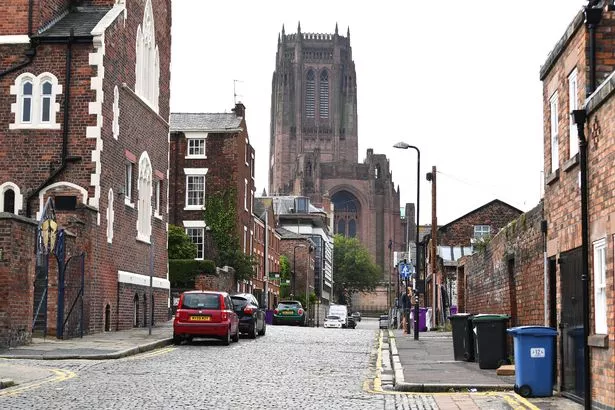 Pilgrim Street(Image: Andrew Teebay Liverpool Echo)
Pilgrim Street(Image: Andrew Teebay Liverpool Echo)
Initially known as Jamieson Street, Pilgrim Street was rechristened after a privateer called “The Pilgrim” which docked in Barbados carrying a “prize” and cargo that fetched £190,000.
Composers’ rooms
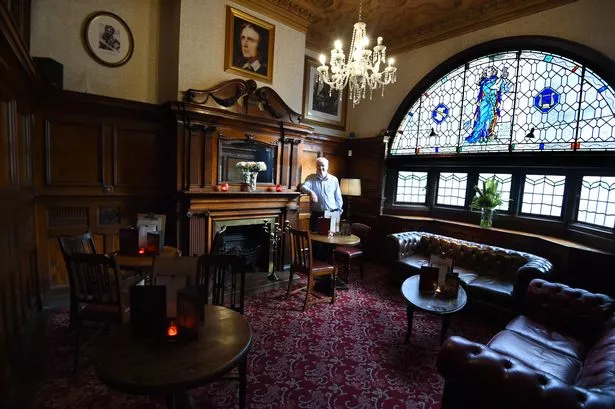 Eamonn Lavin in the Liszt Room. (Pic Andrew Teebay).
Eamonn Lavin in the Liszt Room. (Pic Andrew Teebay).
Arguably, the Philharmonic Pub’s most celebrated feature may well be its Grade I-listed gentlemen’s toilets. However, have you spotted that several of the rooms bear the names of renowned composers Liszt and Brahms?
Both were notably partial to a tipple, as it happens.
Boot scrapers
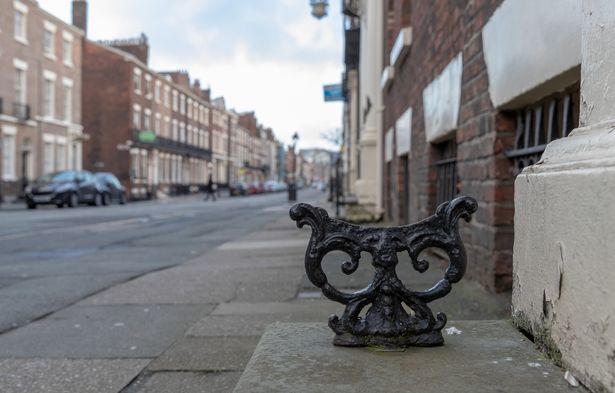 Foot scraper outside property on Rodney Street(Image: Gavin Trafford)
Foot scraper outside property on Rodney Street(Image: Gavin Trafford)
Numerous Liverpool city centre terraces feature these compact metal bars positioned beside their front entrances for guests to clean their footwear before entering.
Rodney Street offers an excellent location to observe them
Remains of Walkways in the Sky
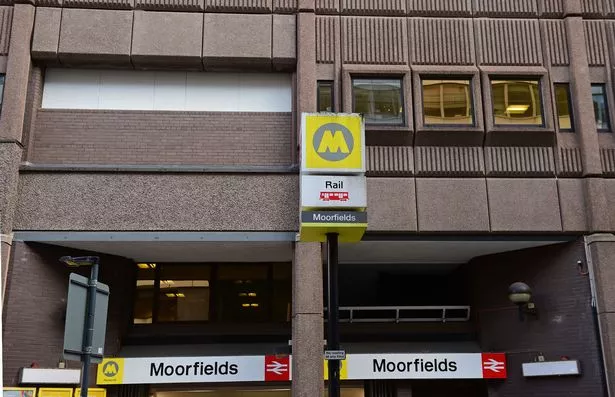 Moorfields Station on Old Hall Street and bricked up Sky walkway. Photo by Colin Lane
Moorfields Station on Old Hall Street and bricked up Sky walkway. Photo by Colin Lane
During the 60s, Liverpool City Council conceived the ambitious notion of constructing elevated walkways above existing roads for pedestrians to bypass traffic.
Unfortunately, much of the project remained unfinished and the remainder has since been demolished. Yet traces persist – from the sealed opening at Moorfields Station where a bridge once spanned Old Hall Street to the seemingly arbitrary balconies surrounding the St John’s Centre.
Confederate connections
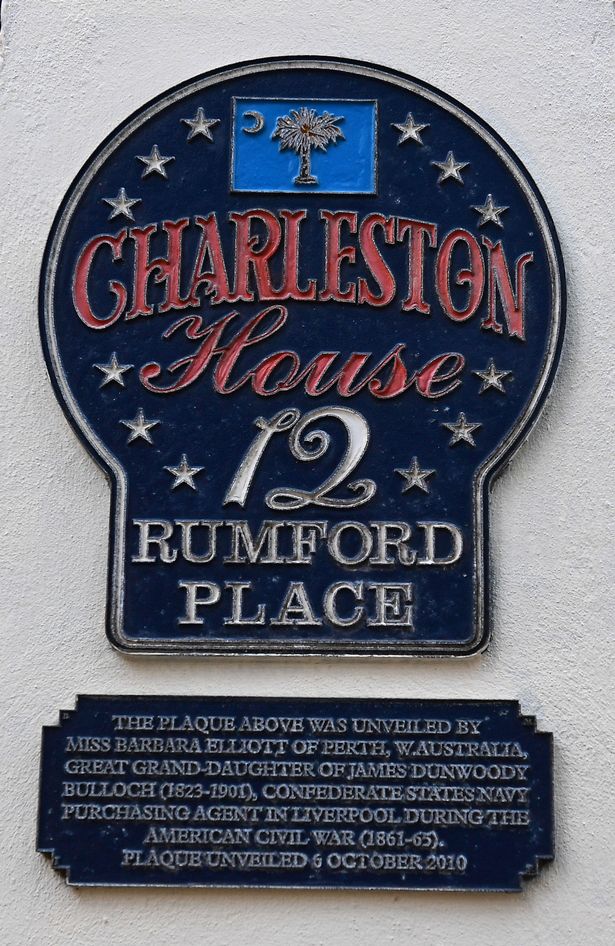 American Civil War plaque at Rumford Place, Liverpool. Photo by Colin Lane
American Civil War plaque at Rumford Place, Liverpool. Photo by Colin Lane
Confederate connections Rumford Place, nestled between Old Hall Street and Chapel Street, was formerly the location of offices with a direct link to America’s Confederate states.
When the Civil War erupted, 60% of their cotton was arriving through Liverpool. The structures bear plaques displaying their Confederate-associated names.
Sanctuary stone
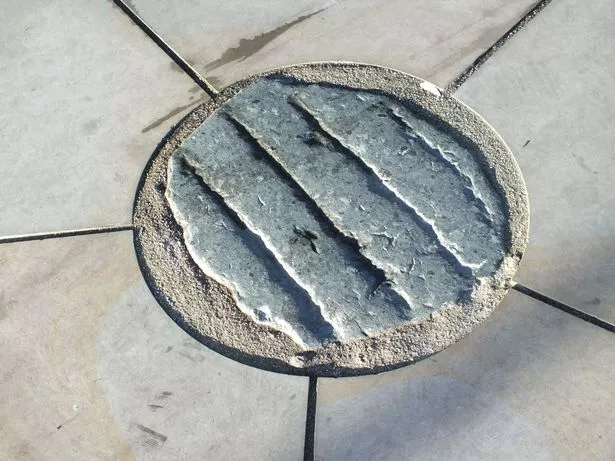 The sanctuary stone on Castle Street, Liverpool City Centre(Image: Liverpool Echo )
The sanctuary stone on Castle Street, Liverpool City Centre(Image: Liverpool Echo )
This round stone on Castle Street is thought to have indicated the perimeter of a medieval marketplace. The ancient stone was repositioned in its original spot in 2011 following removal for roadworks.
Beside it was placed a freshly minted pound coin, along with pennies from 1937 and 1947 – when it was previously excavated.
Literary wall
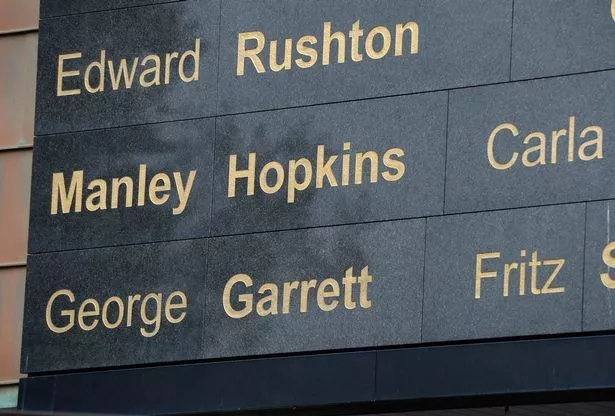 The giant gold-coloured wall on the back of Liverpool Central Library
The giant gold-coloured wall on the back of Liverpool Central Library
The enormous gold-hued wall on the rear of Liverpool Central Library previously provided a visual spectacle for motorists travelling over the now-demolished Churchill Way flyover, but remains worth a visit.
It displays a polished black granite section engraved with the names of the city’s most celebrated authors.
Egyptian Sphinxes
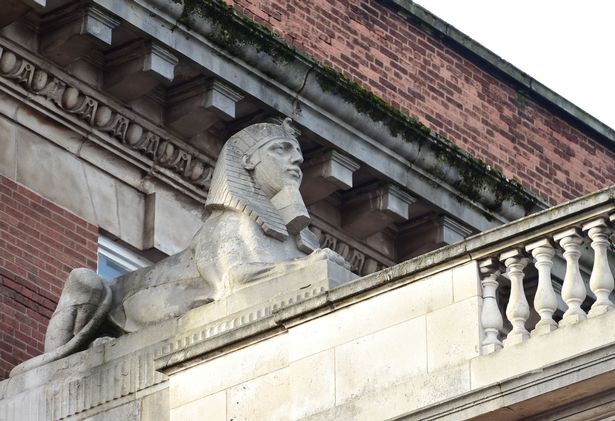 Sphinxes on roof of Ashton Building,next to the Victoria Gallery and Musuem on Brownlow Hill.(Pic Andrew Teebay).
Sphinxes on roof of Ashton Building,next to the Victoria Gallery and Musuem on Brownlow Hill.(Pic Andrew Teebay).
Glance upwards when visiting the University of Liverpool’s Victoria Gallery and Museum and on the neighbouring Ashton Building you will spot a pair of Sphinxes.
Pool of Life
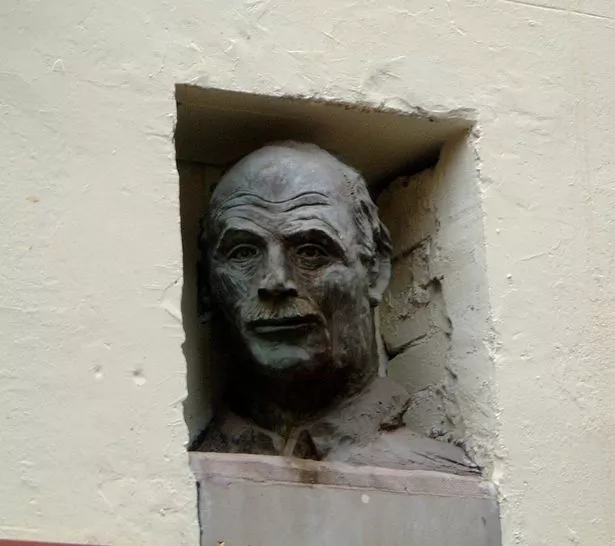 A bust of Carl Jung in Flanagans apple Mathew Street(Image: Reach PLC)
A bust of Carl Jung in Flanagans apple Mathew Street(Image: Reach PLC)
Philosopher Carl Jung, who never travelled to Liverpool, once experienced a dream about the city, stating “I found myself in a dirty, sooty city. It was night, and winter, and dark, and raining. I was in Liverpool.”
He scaled some cliffs and stumbled upon a plateau where streets intersected – which Bootle poet Peter O’Halligan determined in the 70s must have been on Mathew Street. A bust of Yung and a plaque declaring: “Liverpool is the Pool of Life” can be found in a niche outside Flanagan’s Apple.
Secret garden
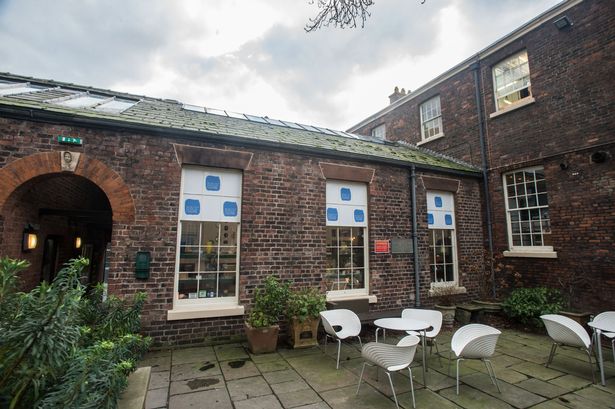 Exterior of Bluecoat Display Centre, College Lane(Image: Liverpool Echo)
Exterior of Bluecoat Display Centre, College Lane(Image: Liverpool Echo)
This might not be news to many Scousers, but students and newcomers to the city, who may be reading this, might not know about the tiny oasis tucked away in the heart of Liverpool ONE.
The Bluecoat’s garden is a haven from the bustling shopping streets. Grab a coffee, find a seat and unwind.
Lusitania propeller
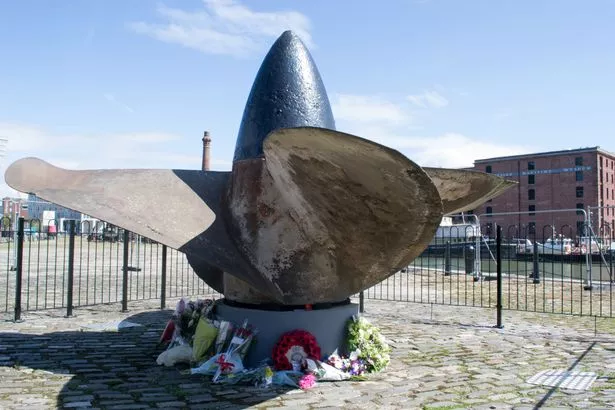 The Lusitania propeller on Mann Island
The Lusitania propeller on Mann Island
One of the four 22.5 tonne, four-bladed propellers that powered the Cunard Line’s RMS Lusitania across the Atlantic on her ill-fated final voyage in May 1915 can be seen on the quayside near the Albert Dock.
It was retrieved from the ship’s wreckage off Ireland in 1982 and was purchased by the Merseyside Maritime Museum in 1989.
Bridewells
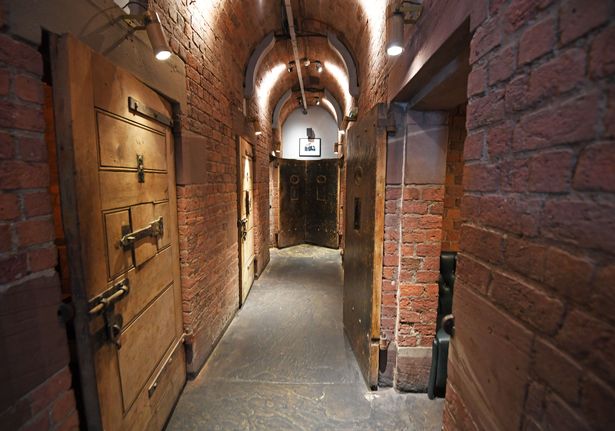 The Bridewell, Liverpool(Image: Liverpool Echo)
The Bridewell, Liverpool(Image: Liverpool Echo)
There are several old police lock-ups in Liverpool city centre.
Charles Dickens famously visited the one on Campbell Square, which is now a pub named Bridewell. The Bridewell on Prescot Street has housed artists’ studios for decades and the former prison building on Cheapside is now student accommodation.
The Pooley Gates
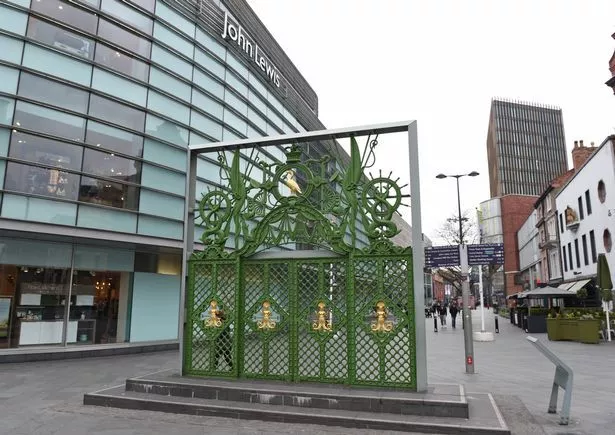 Pooley Gates (Image: Colin Lane)
Pooley Gates (Image: Colin Lane)
Liverpool’s Sailors Home on Canning Place was an imposing sight sadly lost in 1974 when it was demolished due to bomb damage during the World War II.
The gates of the historic site can still be seen, as they have been situated near John Lewis in Liverpool ONE since their return to the city in 2011. The gates were designed by West Derby-born Joseph Pooley and feature one of the oldest examples of the Liver Bird motif; they had previously stood in a West Midlands factory for 60 years.
Overhead railway tunnel entrance
 Overhead railway tunnel entrance
Overhead railway tunnel entrance
(Image: Liverpool ECHO )
As you head south along The Strand, you’ll eventually spot the bricked-up entrance to the 1896 Liverpool Overhead Railway tunnel high in the cliff face beneath Grafton Street.
Titanic Band Memorial
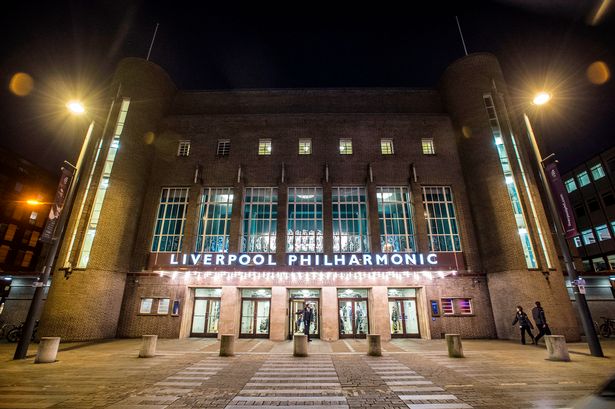 Liverpool’s Philharmonic Hall, Hope Street(Image: James Maloney/Liverpool Echo)
Liverpool’s Philharmonic Hall, Hope Street(Image: James Maloney/Liverpool Echo)
One of the most poignant stories from the Titanic disaster is that of the ship’s musicians who continued to play as the vessel sank, providing comfort to their fellow passengers. But did you know that the viola player was from Liverpool?
A wooden tablet honouring the memory of John Frederick Preston Clarke and his colleagues can be found on display in the Philharmonic Hall.
Secret shopping street
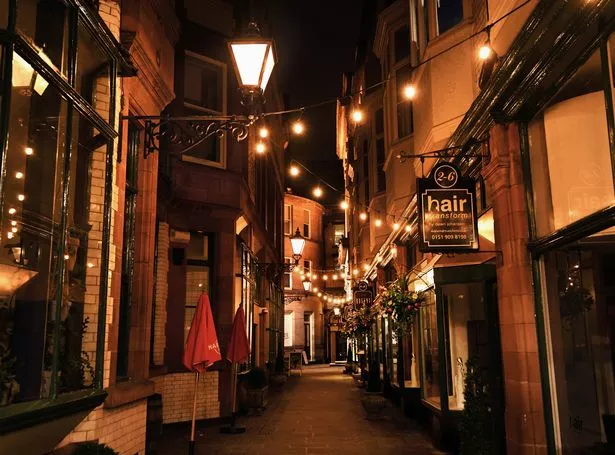 Queens Avenue off Castle Street, Liverpool(Image: Colin Lane/Liverpool Echo)
Queens Avenue off Castle Street, Liverpool(Image: Colin Lane/Liverpool Echo)
Often overlooked by those strolling along Castle Street, the Grade I-listed Queens Avenue is certainly worth a detour. Adorned with Georgian lampposts, it houses a variety of shops and businesses, including independent wine merchant RandH Fine Wines and gallery Dot-Art.
Red telephone box
 Red telephone box inside Liverpool Cathedral. (Pic Andrew Teebay).(Image: Liverpool ECHO)
Red telephone box inside Liverpool Cathedral. (Pic Andrew Teebay).(Image: Liverpool ECHO)
And while there are still a few red telephone boxes scattered around the city, have you ever noticed the one inside Liverpool Cathedral?
The building’s architect, Sir Giles Gilbert Scott, was commissioned by King George to design a phone kiosk, resulting in the iconic red K6 cast iron box. Now, Scott’s smallest creation resides within his largest.
Message in Morse code
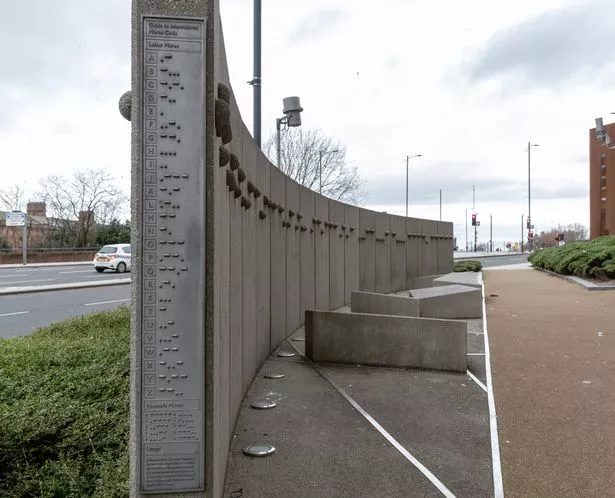 Morse Code installation on The Strand(Image: Gavin Trafford)
Morse Code installation on The Strand(Image: Gavin Trafford)
A message in Morse code is etched on the curved wall that runs along the corner of Old Hall Street and The Strand, spelling out ‘Permission to Come Aboard’.
This forms part of the ‘Connections – Face of Liverpool’ sculpture by Stephen Broadbent, which also features faces captured in glass portholes, representing Liverpool’s diverse gene pool.
Liverpool Cityscape
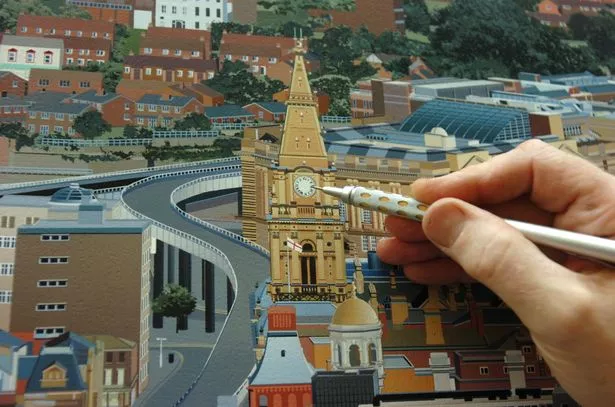 Artist Ben Johnson, with the Liverpool Cityscape painting at The Walker Art Gallery, depicting fine detail the Liverpool area. Taken from Tark for Echos of the Past – January 30 2008(Image: Trinity Mirror NW2)
Artist Ben Johnson, with the Liverpool Cityscape painting at The Walker Art Gallery, depicting fine detail the Liverpool area. Taken from Tark for Echos of the Past – January 30 2008(Image: Trinity Mirror NW2)
It’s astounding how much Liverpool’s world-renowned skyline has transformed over the past decade. You can appreciate just how different it now looks by viewing Ben Johnson’s artwork on the top floor of the Museum of Liverpool.
Commissioned to create ‘The Liverpool Cityscape’ for 2008, the artist spent more than three years and employed 11 assistants to paint it, based on his own sketches and 3,000 photographs.
An American Eagle
 US Consulate eagle on Paradise Street.(Image: Gavin Trafford)
US Consulate eagle on Paradise Street.(Image: Gavin Trafford)
A golden eagle marks the spot on Paradise Street where the world’s first US consulate stood before closing after World War II.
Perched above Cote Bistro, it is a replica – the original was removed in 2003 when the development of Liverpool ONE began. You can find it in the Museum of Liverpool.
Liverpool’s forefathers
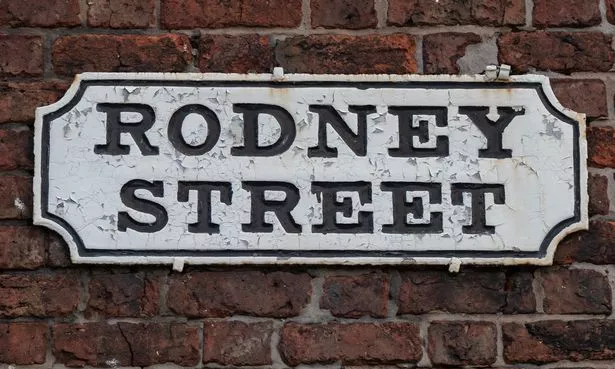 Rodney Street is named after Admiral George Rodney, a key supporter of the slave trade in the city(Image: Gavin Trafford)
Rodney Street is named after Admiral George Rodney, a key supporter of the slave trade in the city(Image: Gavin Trafford)
Many of our streets were named after the men who played a significant role in Liverpool’s history.
Among them are Rodney Street (named after Admiral George Brydges, the 1st Baron Rodney), Parr Street (named after banker Thomas Parr) and Mann Island (named after oil-stone dealer John Mann who passed away there in 1784). There are also a few named after women – such as Hardman Street, named after Mrs Hardman, the widow of John Hardman of Allerton who originally owned the land the road traversed.
Regrettably, the history books we’ve consulted did not record her first name.
Fighting children
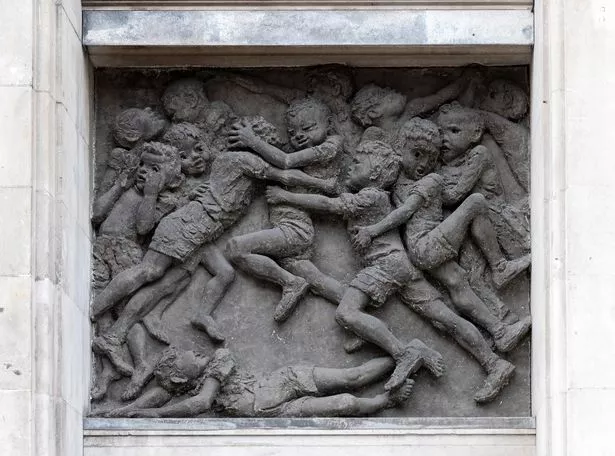 Plaque of fighting children on the wall of the old Lewis’s building.(Image: Gavin Trafford)
Plaque of fighting children on the wall of the old Lewis’s building.(Image: Gavin Trafford)
We’re all so preoccupied either admiring or avoiding our gaze from Dicky Lewis on the front of the former Lewis’s department store that most of us haven’t noticed the reliefs above the entrance.
They depict a baby in a pram, children playing and a group of kids scrapping.
Old Dock
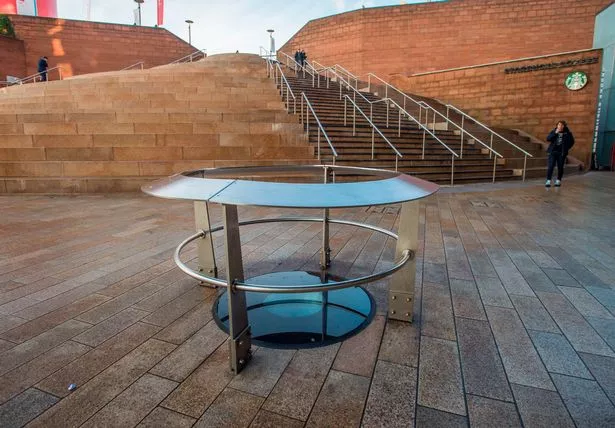 The unassuming window at Liverpool ONE that looks down inside the secret tour of Liverpool’s historic Old Dock(Image: James Maloney/Liverpool Echo)
The unassuming window at Liverpool ONE that looks down inside the secret tour of Liverpool’s historic Old Dock(Image: James Maloney/Liverpool Echo)
Thousands of shoppers stroll past this unassuming window that peers down inside the secret tour of Liverpool’s historic Old Dock – beneath Liverpool One.
Peer down through a hole in the concrete outside John Lewis by the Liverpool ONE steps and you will be able to glimpse the city’s Old Dock.
You can also embark on a tour of what was the world’s first commercial enclosed wet dock.
Wall of Fame
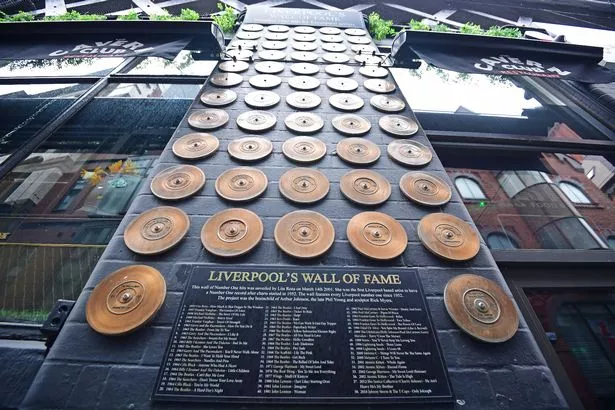 Liverpool’s Wall of Fame on Mathew Street. Photo by Colin Lane
Liverpool’s Wall of Fame on Mathew Street. Photo by Colin Lane
If you tend to use Mathew Street as a shortcut to traverse across town, or you only venture there after a few Jagerbombs, then you may not have noticed – or have forgotten noticing – the wall of discs.
Situated alongside the bricks bearing the names of musicians and bands who have graced The Cavern, Liverpool’s Wall of Fame pays homage to those local artists who have topped the charts.
Ghost signs
These delightful remnants of Liverpool’s history can be spotted fading on buildings throughout the city, including in the city centre.
One such sign, for Joseph Glover and Sons, plumbers, painters and general contractors, is located on Knight Street.
Rooftop pineapple
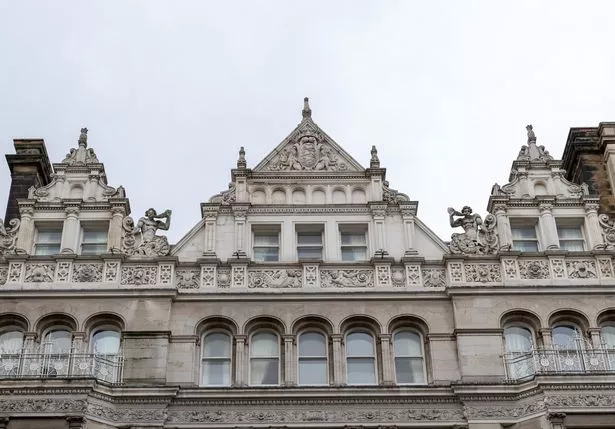 Pineapples on the roof of a building in Castle Street.(Image: Gavin Trafford)
Pineapples on the roof of a building in Castle Street.(Image: Gavin Trafford)
Castle Street is brimming with stunning listed buildings that showcase a variety of architectural styles.
A particular favourite has to be the stone pineapples adorning one of the buildings on the west side of the street, near Cafe Nero.
Eleanor Rigby
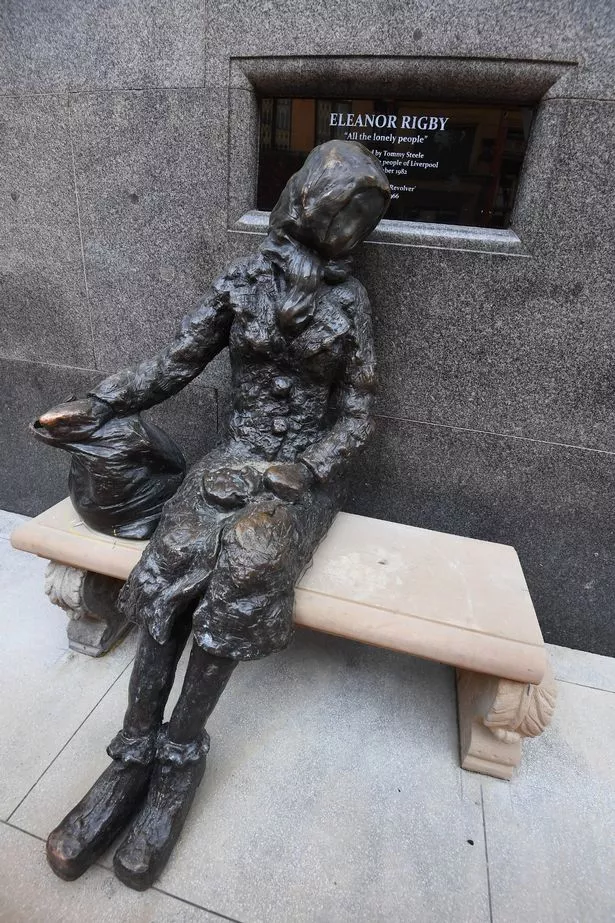 The Eleanor Rigby statue on Stanley Street(Image: Andrew Teebay Liverpool Echo)
The Eleanor Rigby statue on Stanley Street(Image: Andrew Teebay Liverpool Echo)
Tommy Steele’s statue of Eleanor Rigby sits quietly observing the world from Stanley Street.
Ironically, this representation of the lonely Eleanor from the Beatles song often goes unnoticed. She resides on Stanley Street, adjacent to the Metquarter, offering companionship to other solitary souls.
Even if you’ve spent time with her, you might not know that she was created by entertainer Tommy Steele, and items contained within the sculpture include a copy of the Liverpool Echo.
Gold bullion
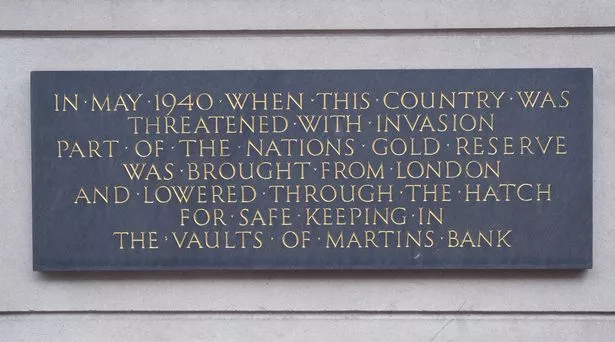 Look inside Martins Bank Building on Water Street, Liverpool. Photo by Colin Lane(Image: Look inside Martins Bank Building on Water Street, Liverpool. Photo by Colin Lane)
Look inside Martins Bank Building on Water Street, Liverpool. Photo by Colin Lane(Image: Look inside Martins Bank Building on Water Street, Liverpool. Photo by Colin Lane)
The Martin’s Bank Building on Water Street is undoubtedly one of Liverpool’s most exquisite structures.
From its stunning painted wood panelling to its exquisite tiled floors, it’s certainly worth a visit when it occasionally opens to the public for Heritage Open Days. In 1940, with the threat of German invasion looming, much of Britain’s gold reserves were relocated to the bank’s vault.
A plaque on the wall next to Exchange Flags confirms this.
Memorial Garden
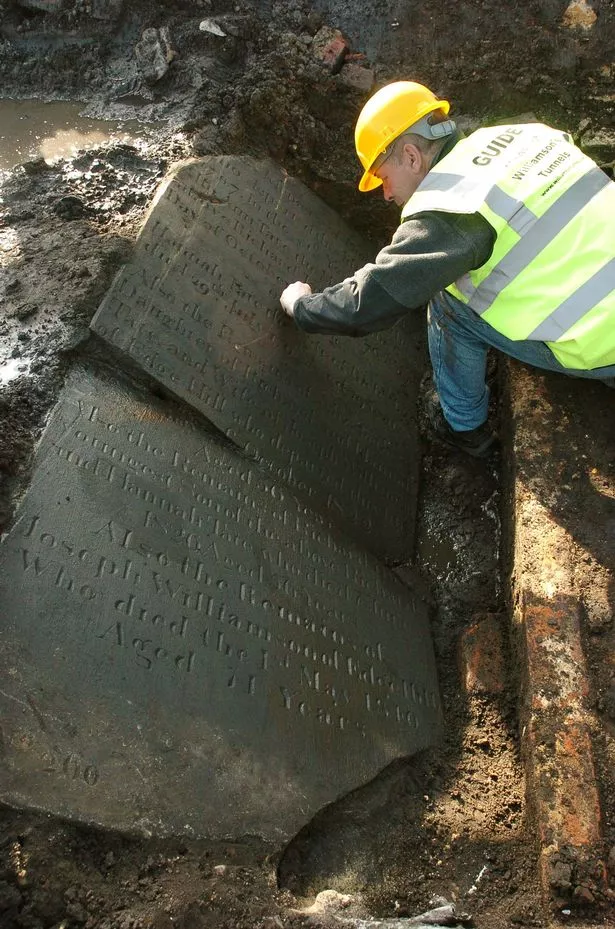 Joseph Williamson Grave unearthed on the Grosvenor Site (Image: Reach PLC)
Joseph Williamson Grave unearthed on the Grosvenor Site (Image: Reach PLC)
During the construction of Liverpool One, Joseph Williamson’s grave was unearthed at the site of what used to be St Thomas Church graveyard.
The Mole of Edge Hill, who was responsible for a network of tunnels beneath Liverpool, had been interred in the Tate family vault under the church. It is now marked with a memorial garden, opposite the entrance to the Q-Park at John Lewis.
Symbols of justice
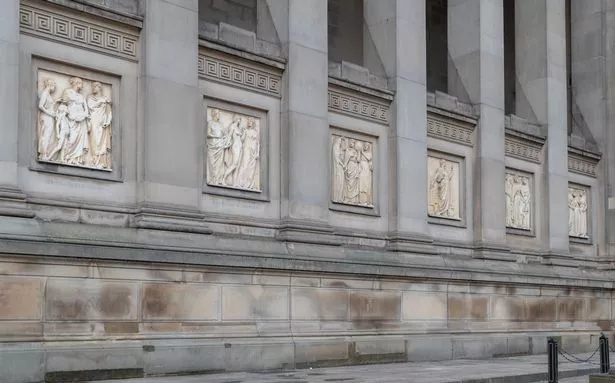 Carvings on the side of St Georges Hall, Lime Street side.(Image: Gavin Trafford)
Carvings on the side of St Georges Hall, Lime Street side.(Image: Gavin Trafford)
While the stone lions on the plateau of St George’s Hall – and the grandeur of the hall itself – are hard to miss, the decoration on the side of the building can easily be overlooked. Here, a series of panels reminds us that one of the hall’s original purposes was as a law court.
They depict a child, symbolising Justice, gradually maturing into a woman and ultimately ascending into a higher sphere of immortality.
Moonwalk
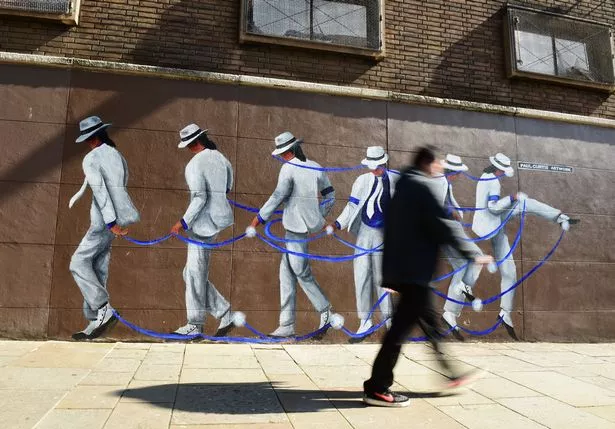 Michael Jackson Moonwalk artwork by Paul Curtis on Colquitt Street.(Pic Andrew Teebay).
Michael Jackson Moonwalk artwork by Paul Curtis on Colquitt Street.(Pic Andrew Teebay).
There are probably few people who haven’t yet taken a selfie with Paul Curtis’ Liver Bird Wings mural in the Baltic Triangle, but have you seen his other work?
The Liverpool artist was particularly active in 2018, creating some stunning paintings across the city. His Michael Jackson Moonwalker mural can be found on the corner of Colquitt Street and Seel Street.
Needle
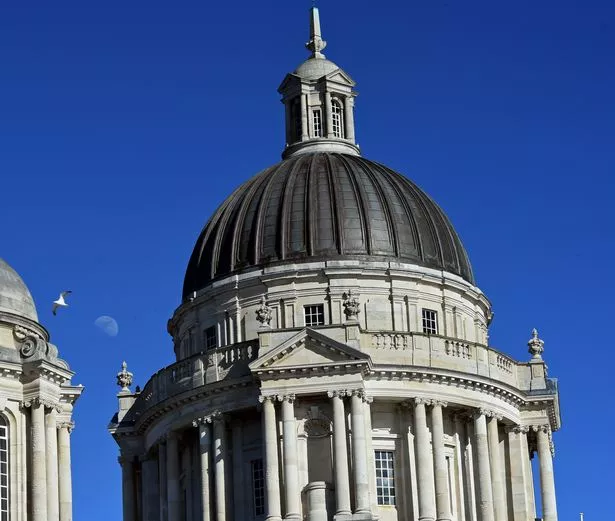 The Port of Liverpool Building with its dome and needle at the Pier Head. Photo by Colin Lane
The Port of Liverpool Building with its dome and needle at the Pier Head. Photo by Colin Lane
It’s difficult to picture the Pier Head without the Three Graces, and the Port of Liverpool Building is the most extravagantly adorned of the three.
Atop its 220ft central dome, which was actually part of Lutyen’s unused design for Liverpool Metropolitan Cathedral, sits an Egyptian-style needle.
Liverpool Mountain
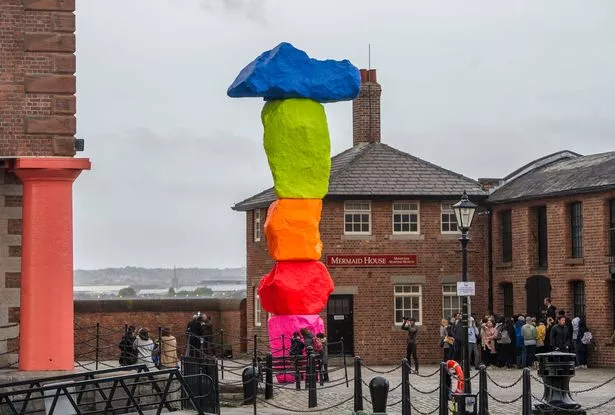 Liverpool Mountain by Ugo Rondinone
Liverpool Mountain by Ugo Rondinone
Its bright colours may be hard to miss, but if you haven’t taken a walk around the Albert Dock recently, you could be forgiven for not knowing about Ugo Rondinone’s Liverpool Mountain artwork.
Commissioned by Liverpool Biennial and Tate Liverpool, it stands over 10m tall and is similar to technicolour towers he has created in Miami and Las Vegas.
Original seven streets
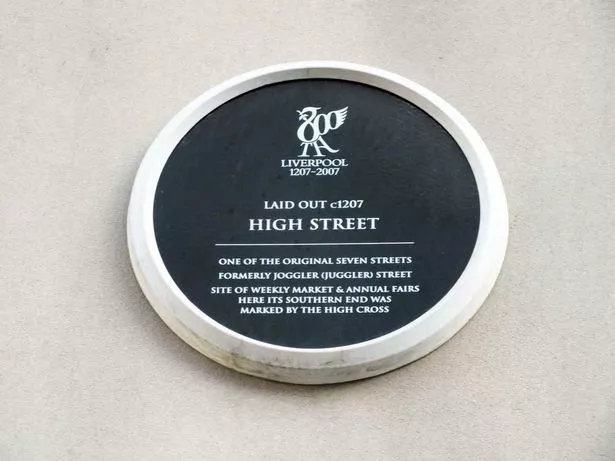 The plaque showing that High Street was one of the original seven streets of Liverpool, Liverpool City Centre
The plaque showing that High Street was one of the original seven streets of Liverpool, Liverpool City Centre
You can still stroll along the roads that made up the original centre of Liverpool – though their names have changed.
High Street, where the Town Hall is located, was once known as Juggler Street. Look out for the plaques marking the locations of the seven streets.
Coat of Arms above a former busy shop
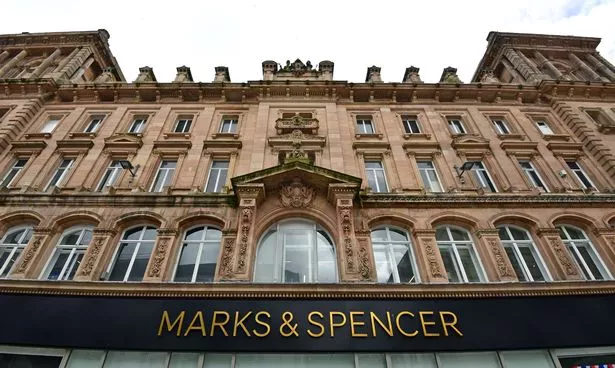 The old Marks and Spencer on Church Street(Image: Liverpool Echo/Colin Lane)
The old Marks and Spencer on Church Street(Image: Liverpool Echo/Colin Lane)
Have you ever noticed how grand the building housing the old Marks and Spencer on Church Street is?
That’s because it used to be a hotel. You can still see the coat of arms high above the main entrance.
Stage door
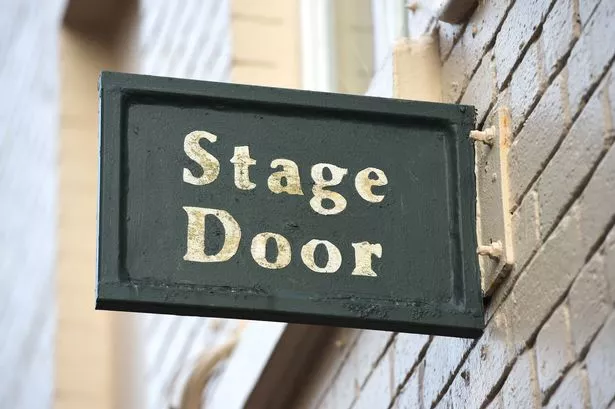 The Stage Door. (Pic Andrew Teebay).
The Stage Door. (Pic Andrew Teebay).
As you’re rushing past the St Johns Centre towards Williamson Square, take a moment to glance at the modest stage door of the Playhouse theatre.
Consider the array of famous faces who have passed through it over the years – including the likes of Michael Redgrave, Anthony Hopkins, Robert Donat and Rachel Kempson.
